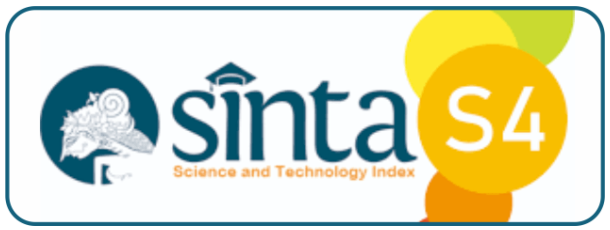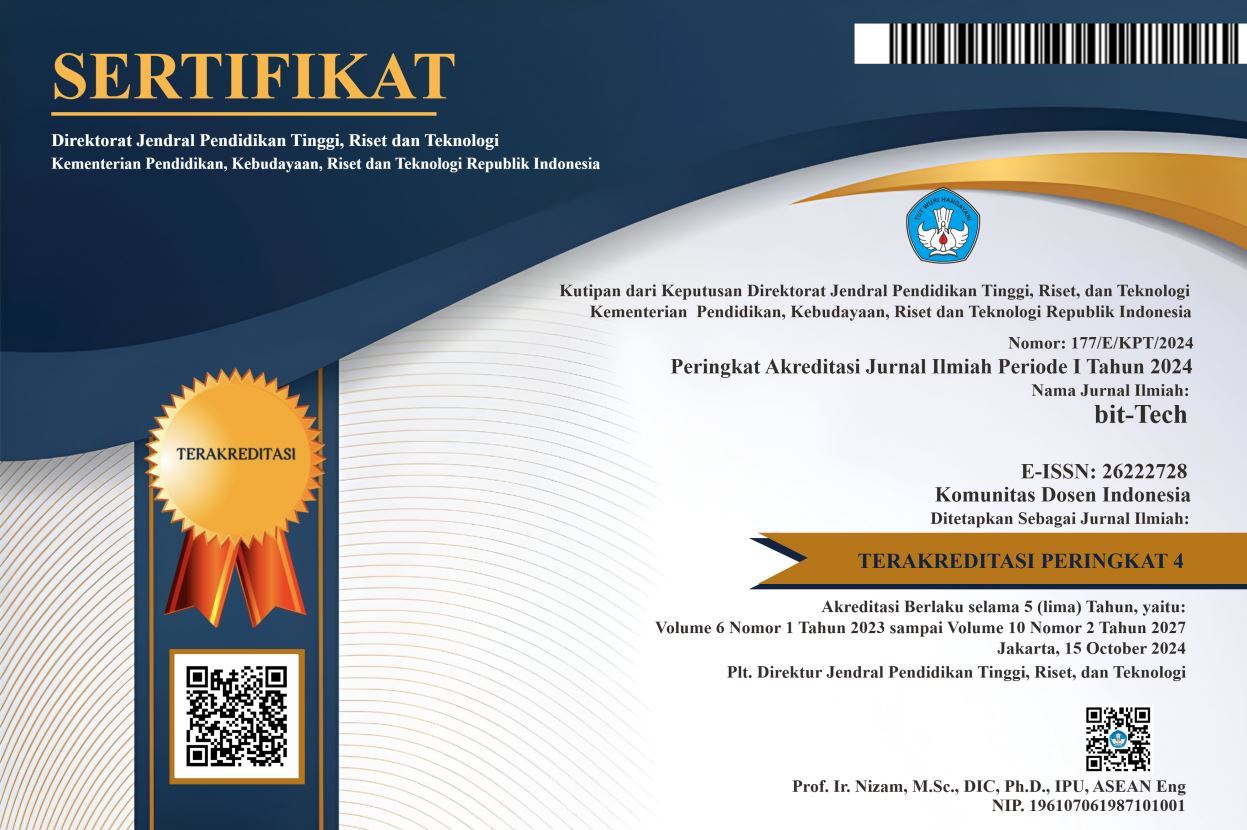Application of The Haversine Method In The Android-Based Donation Search Application
DOI:
https://doi.org/10.32877/bt.v6i1.736
Keywords:
Application, Android, Donation, Flutter, Haversine
Abstract
Used goods that we no longer use will only fill the room which if we leave it will be damaged and have no use value because it consumes time. If given to someone else, the goods may still be useful and can help their lives the problem is how we find people who need our goods and vice versa. For this reason, a system is needed that can help facilitate and bring the two parties together. The effort made to make it easier for the recipient to contribute in taking the donated goods is to use the haversine method so that the recipient can consider the distance between them and the donated item. The haversine formula is an equation that uses latitude and longitude to find the distance between the two different points. By using the haversine formula, the output is the distance from the location of the party receiving the donation (current location) to the donor. Therefore, the author wants to create and design an android-based application so that it can reach many people and can make it easier for donors to donate their goods or for the recipient of donations in looking for items that have been donated.
Downloads
References
Imam Husni Al Amin and Wahyudiono, “IMPLEMENTASI METODE HAVERSINE UNTUK PENCARIAN OPTICAL DISTRIBUTION POINT,” Dinamika Informatika, vol. 13, no. 1, 2021.
Umaima, Hariyanto, and Rusnaena, “SUMBANGAN NON TUNAI PADA PEMBANGUNAN MASJID BAITURRAHIM KAB. PINRANG DALAM HUKUM ISLAM,” balanca Jurnal Ekonomi dan Bisnis Islam, vol. 2, no. 1, pp. 15–23, 2020.
J. Suhimarita and D. Susianto, “AMIK Dian Cipta Cendikia APLIKASI AKUTANSI PERSEDIAAN OBAT PADA KLINIK KANTOR BADAN PEMERIKSA KEUANGAN PERWAKILAN LAMPUNG,” Jurnal Sistem Informasi Akuntansi (JUSINTA) JUSINTA |, vol. 2, no. 1, 2019.
D. Syifani and A. Dores, “APLIKASI SISTEM REKAM MEDIS DI PUSKESMAS KELURAHAN GUNUNG,” Teknologi Informatika dan Komputer, vol. 9, no. 1, 2018.
V. Handrianus Pranatawijaya, "PENERAPAN LOCATION BASED SERVICED (LBS) DALAM PROTOTIPE PENGENALAN RUANGAN DENGAN METODE EXTREME PROGRAMMING," JURNAL TEKNOLOGI INFORMASI : JURNAL KEILMUAN DAN APLIKASI BIDANG TEKNIK INFORMATIKA, vol. 15, no. 1, pp. 92-99, 2021, doi: 10.47111/JTI.
S. Alfeno and R. Eka Cipta Devi, "Implementasi Global Positioning System (GPS) dan Location Based Service (LSB) pada Sistem Informasi Kereta Api untuk Wilayah Jabodetabek," Jurnal SISFOTEK GLOBAL, vol. 7, no. 2, pp. 27-33, 2017.
Nurhidayati and A. Muliawan Nur, "Pemanfaatan Aplikasi Android Dalam Rancang Bangun Sistem Informasi Persebaran Indekos di Wilayah Pancor Kabupaten Lombok Timur," Infotek:Jurnal Informatika dan Teknologi, vol. 4, no. 1, pp. 51-62, Jan. 2021, doi:10.29408/jit.v4i1.2989.
F. B. Prasetio and T. Wellem, “PERANCANGAN DAN IMPLEMENTASI APLIKASI ANDROIDUNTUK LAYANAN INFORMASI PARIWISATA,” IT-EXPLORE Jurnal Penerapan Teknologi Informasi dan Komunikasi, vol. 1, no. 2, pp. 114–132, 2022.
K. Adha Bilqis Ibrahim and D. Gustina, “RANCANG BANGUN APLIKASI BERBASIS ANDROID UNTUK BRAND CLOTHING SAND BEACH DENGAN SKEMA DISKON MENGGUNAKAN HUNGARIAN ALGORITHM,” JSI (Jurnal sistem Informasi) Universitas Suryadarma, vol. 8, no. 1, pp. 47–56, 2021.
H. Santoso, W. Suharso, and Hariyady, “Pembangunan Aplikasi Mobile Hybrid Pada M-Voting Pemilu Raya Universitas Muhammadiyah Malang,” IJAI, vol. 4, no. 2, pp. 127–137, 2020.
F. Enggar Krisnada and R. Tanone, “Aplikasi Penjualan Tiket Kelas Pelatihan Berbasis Mobile menggunakan Flutter,” Jurnal Teknik Informatika dan Sistem Informasi, vol. 5, no. 3, Jan. 2020, doi: 10.28932/jutisi.v5i3.1865.
M. Widiarta, M. Julkarnain, and J. Imanulloh, “RANCANG BANGUN APLIKASI UTS IN ME BERBASIS ANDROID MENGGUNAKAN FLUTTER DENGAN METODE RAPID APPLICATION DEVELOPMENT,” JINTEKS (Jurnal Informatika Teknologi dan Sains), vol. 4, no. 3, pp. 447–452, 2021.
J. Maylia Suhendro, M. Sudarma, and D. Care Khrisne, “RANCANG BANGUN APLIKASI SELULER PENYEDIA JASA PERAWATAN DAN KECANTIKAN MENGGUNAKAN FRAMEWORK FLUTTER,” Jurnal SPEKTRUM, vol. 8, no. 2, pp. 68–82, 2021.
P. Perkasa, “USE OF GLOBAL POSITIONING SYSTEM (GPS) FOR BASIC SURVEY ON STUDENTS,” 2019. [Online]. Available: https://camargus.com/magazine/231
A. Harsa Kridalaksana, Yulianto, and Ramadiani, “PENERAPAN FORMULA HAVERSINE PADA SISTEM INFORMASI GEOGRAFIS PENCARIAN JARAK TERDEKAT LOKASI LAPANGAN FUTSAL,” Informatika Mulawarman:Jurnal Ilmiah Ilmu Kompute, vol. 13, no. 1, pp. 14-21, 2018.
A. Nugroho, R. Jumardi, N. F. Ramadhania, S. Tinggi, and T. Bontang, “Penerapan Metode Haversine Formula Untuk Penentuan Titik Kumpulpada Aplikasi Tanggap Bencana,” METIK, vol. 4, pp. 69-75, 2020.
H. Zenita and R. Fiati, “SDLC MODEL FOR IMPLEMENTATION OF E-BLANGKO ON DEPARTMENT OF POPULATION AND CIVIL REGISTRATION,” Kumpulan jurnaL Ilmu Komputer (KLIK), vol. 6, no. 1, pp. 58–70, 2019.
I. Raksa Gumilang, “PENERAPAN METODE SDLC (SYSTEM DEVLOPMENT LIFE CYCLE) PADA WEBSITE PENJUALAN PRODUK VAPO,” Jurnal Riset Rumpun Ilmu Teknik, vol. 1, no. 1, pp. 47–56, 2022.
D. Marisa Khairina, F. Wicaksana Ramadhinata, and H. Rahmania Hatta, “PENCARIAN LOKASI JALUR NUGRAHA EKAKURIR (JNE) TERDEKAT MENGGUNAKAN HAVERSINE FORMULA (STUDI KASUS KOTA SAMARINDA),” 2017.
S. I. Purnawan, F. Marisa, and I. Dharma Wijaya, “Aplikasi Pencarian Pariwisata Dan Tempat Oleh-Oleh Terdekat Menggunakan Metode Haversine Berbasis Android,” JIMP-Jurnal Informatika Merdeka Pasuruan, vol. 3, no. 2, 2018, [Online].
Downloads
Published
How to Cite
Issue
Section
License
Copyright (c) 2023 bit-Tech

This work is licensed under a Creative Commons Attribution-ShareAlike 4.0 International License.
I hereby assign and transfer to bit-Tech all exclusive copyright ownership rights to the above work. This includes, but is not limited to, the right to publish, republish, downgrade, distribute, transmit, sell, or use the work and other related materials worldwide, in whole, or in part, in all languages, in electronic, printed, or any other form of media, now known or hereafter developed and reserves the right to permit or license a third party to do any of the above. I understand that this exclusive right will belong to bit-Tech from the date the article is accepted for publication. I also understand that bit-Tech, as the copyright owner, has sole authority to license and permit reproduction of the article. I understand that, except for copyright, any other proprietary rights associated with the work (e.g. patents or other rights to any process or procedure) must be retained by the author. In addition, I understand that bit-Tech permits authors to use their papers in any way permitted by the applied Creative Commons license.


 DOI :
DOI :
 Abstract views: 169
/
Abstract views: 169
/  PDF downloads: 223
PDF downloads: 223











